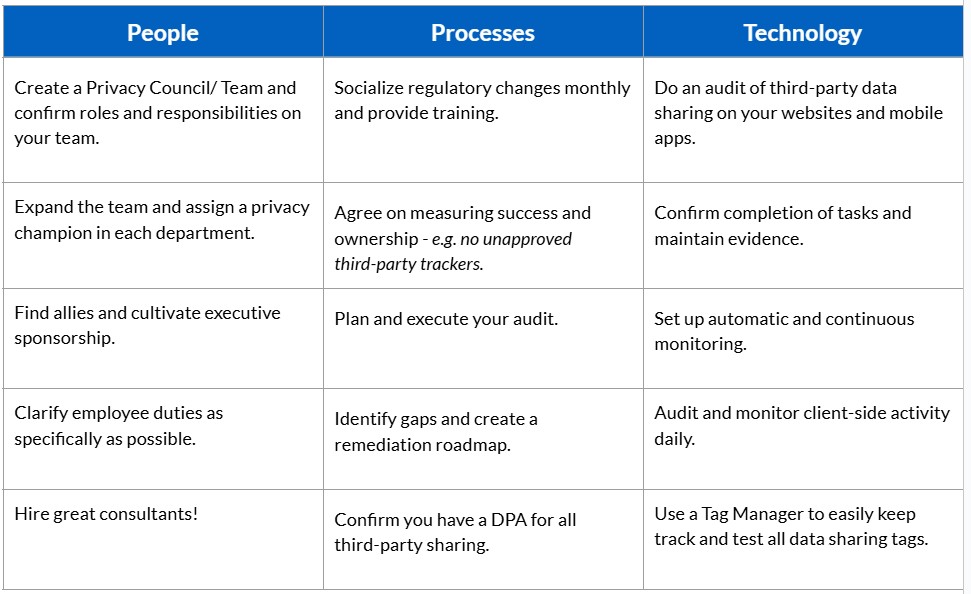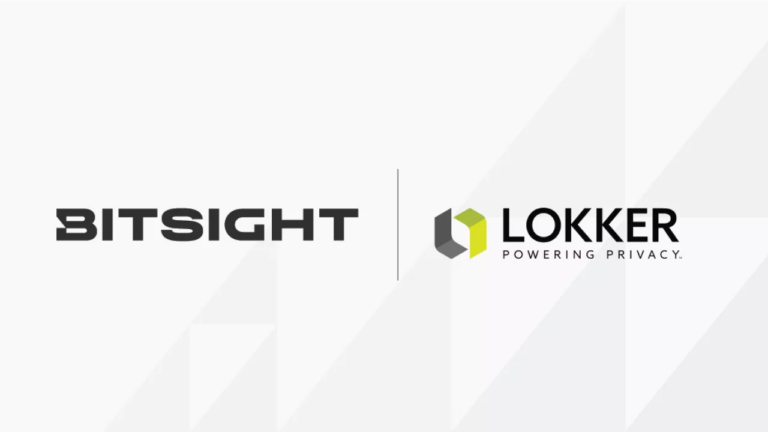Cross-Functional Issues with Data Privacy
As privacy regulations rapidly evolve and enforcement intensifies, organizations are discovering that managing data privacy cannot be confined to the legal department alone. Cross-functional collaboration—between legal, engineering/IT, marketing, and privacy teams—is no longer optional. This outlines the key challenges, misalignments, and practical strategies organizations can adopt to build aligned, effective privacy management programs.
The Challenge of Cross-Functional Privacy Governance
Data privacy compliance efforts often struggle—not because of lack of awareness, but because of misaligned priorities across departments:

Functions often have different goals:
- Legal: Prioritizes immediate compliance to reduce risk exposure and can often be risk adverse.
- Engineering/IT: Focuses on functionality and minimal disruption – they often dislike changes that do not benefit the user.
- Marketing: Desires aggressive lead generation and customer engagement which minimizes distractions to brand building and sales.
- Privacy Teams: Struggle for tools, visibility, and funding.
These goals can create silos leading to predictable friction. When everyone is working with a different playbook— no one is shocked when compliance failures happen.
Core Issues Undermining Privacy Programs
1. Tool Gaps and Rapid Tech Changes
Privacy technologies often lag behind the pace of data sharing, consent implementations, and website technologies which are constantly changing. Customer-facing websites and mobile apps require constant scanning and updates to identify privacy risks and mitigate these to maintain compliance.
2. Regulatory Complexity
Global and domestic privacy laws are expanding rapidly. As of 2025:
- 144 countries (covering 82% of the global population) have privacy laws
- Over 20 U.S. states now enforce varying privacy frameworks
- Legacy regulations like BIPA, CIPA, and VPPA continue to spark lawsuits
3. Consent Management Failures
Consent platforms are not plug-and-play. They require continuous testing and configuration along withe remediation to ensure that consent flows align with site behavior and legal obligations.
4. Policy-Reality Mismatches
A privacy policy is a legal promise. If your actual data collection practices don’t align, you’re creating legal risk. Continuous behavioral testing and validation against what your privacy policy says is essential.
Budget and Resource Imbalances
Despite privacy now representing 25%–35% of total cyber-related losses, privacy teams remain underfunded. They operate with limited tools, staffing, and budget—until a breach or regulatory penalty forces change. Teams often have to work according to this quote:
“Start where you are. Use what you have. Do what you can.”
– Arthur Ashe
Actionable Strategies
1. Share Updates Across Teams
Create recurring meetings for legal, marketing, privacy, and Engineering/IT teams to align on goals and share data on real-time privacy risks.
2. Adopt a Data Sharing Decision Framework
Use this simple principle to understand the value of data shared on your website:
If Data Sharing Value > Data Risk = Success
If the value of data sharing to a third party (DV) is greater than the potential risks with sharing data (DR) then consider data sharing to be a success. A more concise way to express this is: DV > DR = Success, which is essentially a concise way of expressing a positive risk-reward ratio.
3. Log Results and Proof
Privacy is not only about doing the right thing—it’s about proving you did. Many regulations require you to document every audit, test, and change you are making.
4. Stay Nimble
Be ready to revise policies, upgrade tools, and train staff as laws evolve.
Sample Action Plan
Below is a sample action plan to be adopted by your privacy team. Success can be the measure of your adherence to these actions as they apply to your business.

The Opportunity: Make Privacy a Team Sport
When privacy is socialized, it stops being a compliance burden and becomes a strategic differentiator.
- Legal protects the brand
- Marketing builds consumer trust
- IT ensures safe, scalable systems
- Privacy becomes everyone’s job
Conclusion
Data privacy is a fast-moving target, and no single team can hit it alone. True compliance—and sustainable trust—requires a cross-functional, transparent, and well-resourced approach.
If your privacy policy says one thing and your site or app does another, you’re at legal risk. But if your privacy team includes Legal, Engineering/IT and marketing members, you’re on the path to success.








